Abstraction that Kills a City
Pavel Šuška
The Nové (New) Lido project, where value will arise from thin air, is part of the story of the essential transformation of the greater center of Bratislava. This heterogenous space connected to the historical city core with the territorial development of the city in the second half of the 20th century changed its relative location, and jumped over by prefabricated housing developments, it became a wider center so that under late post-socialism conditions creating pressure on the principal transformation of the entire territory have ripened.
Historical structures represented by the oldest preserved parts of industrial complexes, which came into existence in the second half of the 19th century and the early 20th century, became the first victims of the greater center transformation. Thanks to the privatization of industrial enterprises, their real estate passed into private hands in the 1990s, which was later projected in their fate. In January 2008, the boiler room from the early 1900s was taken down during a weekend demolition on the premises of the Kablo factory, which was in the process of being declared a historical monument and so was protected until the final decision in the matter. In July 2008, the oldest and the only remaining part of the Gumon factory – the Bakelite molding press shop of 1911, which was protected as historical monument, was unexpectedly and without permit destroyed. As in the case of Kablo, the investor eventually avoided paying any penalty. The Hungarian Royal Tobacco Factory on Radlinského Street, in particular, the tobacco warehouse from the mid-19th century, was protected as a historical monument until 2007. In 2006 the investor failed in its attempt to suspended the protection, but after a fire in 2007 it was removed from the list of historical monuments and demolished in 2010. The demolition of the Danubius Elektrik buildings on Račianska Street began in 2007 and was completed in 2013. Demolition of the Jedľa Mill and Bakery on Račianska Street from the interwar period began in February; the Grünberg’s brush factory buildings were demolished in 2008. The economic crisis at that time only briefly interrupted the interest of capital in construction in developed areas where previous demolition was required. The Cvernovka demolition started in 2012; the old spinning mill which was protected as historical monument remained preserved, but the oldest structure, the dye shop of 1903 was destroyed; the Stein brewery demolition began in the summer of 2014; the fermentation shop from the 1940s remained preserved, but several older buildings were not given the same recognition. The enamel shop in Petržalka also lost these privileges in 2014. Although we can now observe the first hints of acknowledgement of the value of the last vestiges of historical industrial structures even by private owners, the wave of destruction which created space for new rounds of investment demonstrated the perception of the value of city space.
The trees of Lido and the old industrial buildings are united by their futility. The potential for accumulation, i.e. whether capital can effectively circulate through the location in question in this historical, geographic and social context, is the key quality. Capital strives to emancipate itself from natural space and its limits and to recreate it in its own image, abstract space. Such abstraction however does not represent an idea, the result of the thought process of disregarding certain qualities of space in our heads; this abstraction is real. We look at this space primarily from the perspective of capital circulation needs; only a place through which capital can circulate and reproduce has value. This is no moral standpoint, this is a necessary stance considering the systemic position of the actor, who in a competitive environment must profit in order to survive. Someone once said, “capitalism will cut down a tree unless it can sell its shadow,” and we can see real abstraction from the eco systemic services of the greenery on Drotárska Street, in the village of Jasná in the Low Tatras and in the Amazon basin. Or in the futility of Nové Lido. And regardless of the amount of green used in visualizations.
However, the concrete expression of abstract space through concrete in the creative phase of space production can bring along disappointment. It occurs more frequently in the environment of the limited capacities of the public sphere, in which we have also found ourselves here in Bratislava. The nice names, attractive images and other presentations of the new content, which is to be not only more than existing nothing, but is even desired and socially beneficial, collide with the actual implementation of real estate projects.
The history of the actions of the developers circling above Nové Lido offers several examples of how to approach creative regulation limits and they will provide a wide spectrum of disappointment resulting from the final outcome. HB Reavis entered more significantly the history of Bratislava town planning by the implementation of one of the first post-socialist administrative complexes that genuinely differed from historical tradition. Due to serious structural defects and the threat of collapse, Apollo Business Center 1 was prematurely demolished and will forever be a scar on the face of private construction and architecture, which, according to transformation ethos, should have exceeded their impossibly imperfect predecessors. On the contrary, by erecting the genuinely unavoidable Aupark Tower, HB Reavis took care of only a “scar” on the city panorama, although perhaps with a longer existence than that of ABC. Twin City rose from the ruins of the aforementioned Kablovka, which was protected at the time due to ongoing assessment related to its enlisting in the national cultural monuments.
Regarding J&T and its drive to dominate the northern bank of the Danube, the case of PKO (park of Culture and Relaxation) is perhaps most famous, but other projects also deserve our attention. For example, River Park and Karloveské Rameno showed the flexibility of the limits of urban planning decisions and building permits in the first case and urban planning documentation in the second case. While the mass of River Park only grew by using change of construction measures before completion in comparison with the original parameters, Karloveské Rameno completely ignored the function of the location defined in the urban development plan. PKO is then a sad story of how under extremely unfavorable conditions a private investor in shameful collaboration with the city administration stole an important cultural and social institution and public space from the people of Bratislava. The ability to go far beyond the limits of elementary decency was manifested without a single preserved trace of regard for the public interest.
The first post-socialist strategic document of Bratislava of 1998 contains the following declaration: “In the conditions of a liberal market economy, the development and localization of economic activities within the city of Bratislava have been and will be affected by the market’s allocation mechanisms.” This document flattens the city through essential limits in deliberations concerning the future of space and its planning imprisoned within the framework of exchange values, productivistic logic and expected profit; it takes away from their qualities and needs, it abstracts from them. Naturally, such implementation of special abstraction can only be carried out by domination and the pursuit of the interests of one type of actor and does not necessarily lead to the creation of good spaces for all.
Mgr. Pavel Šuska, PhD.
Human geographer, works at the Institute of Geography of the Slovak Academy of Science in Bratislava
 Lido, photo Braňo Bibel
Lido, photo Braňo Bibel

Lido, photo Braňo Bibel
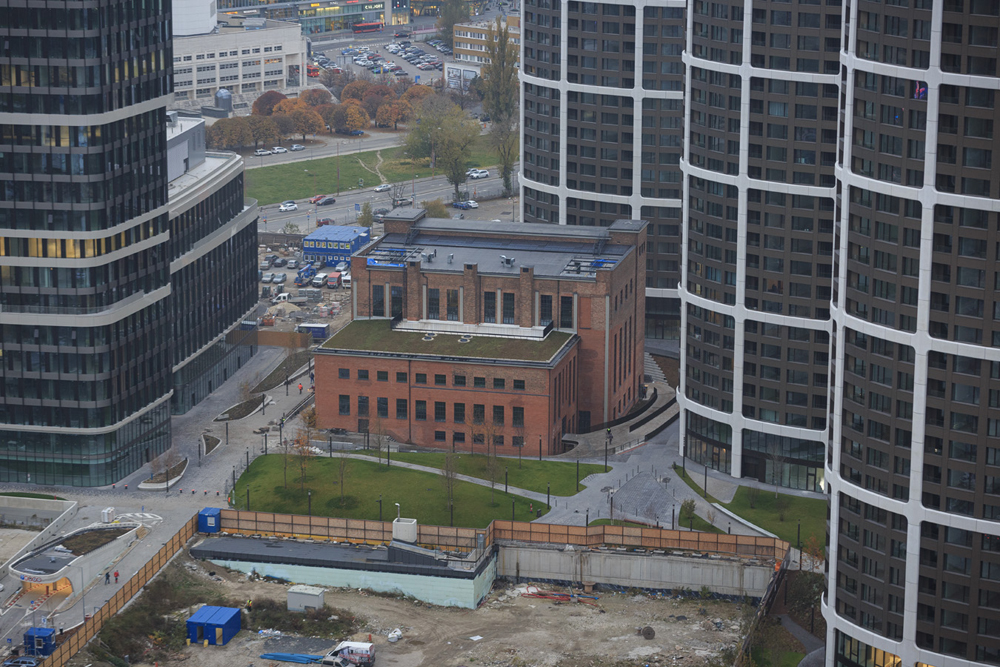 Dušan Jurkovič Elektric work. The only fragment left from the industrial heritage of Braťislava Nivy
disctrict. Photo Braňo Bibel
Dušan Jurkovič Elektric work. The only fragment left from the industrial heritage of Braťislava Nivy
disctrict. Photo Braňo Bibel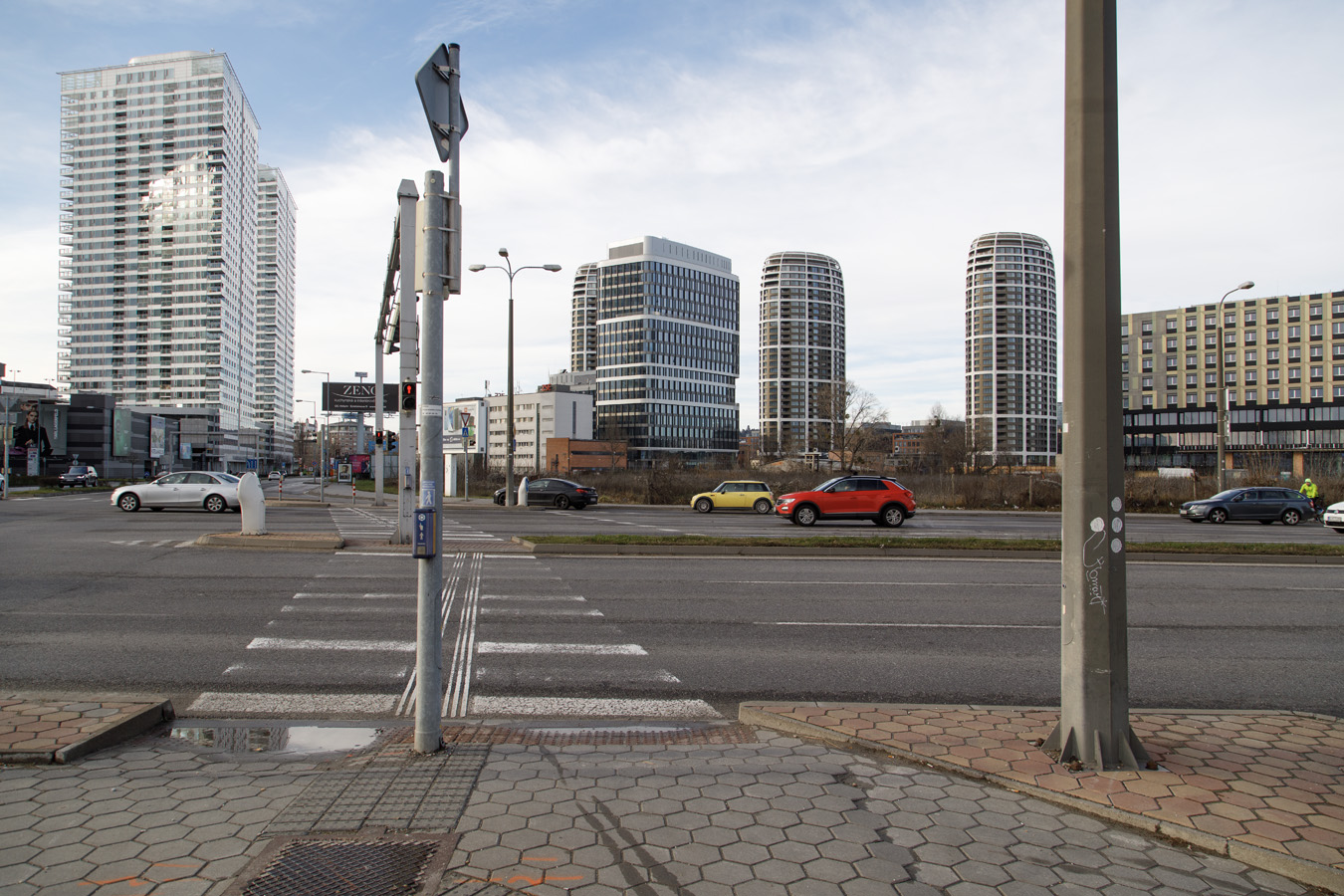
Growing skyline at Braťislava Nivy disctrict. Photo Braňo Bibel
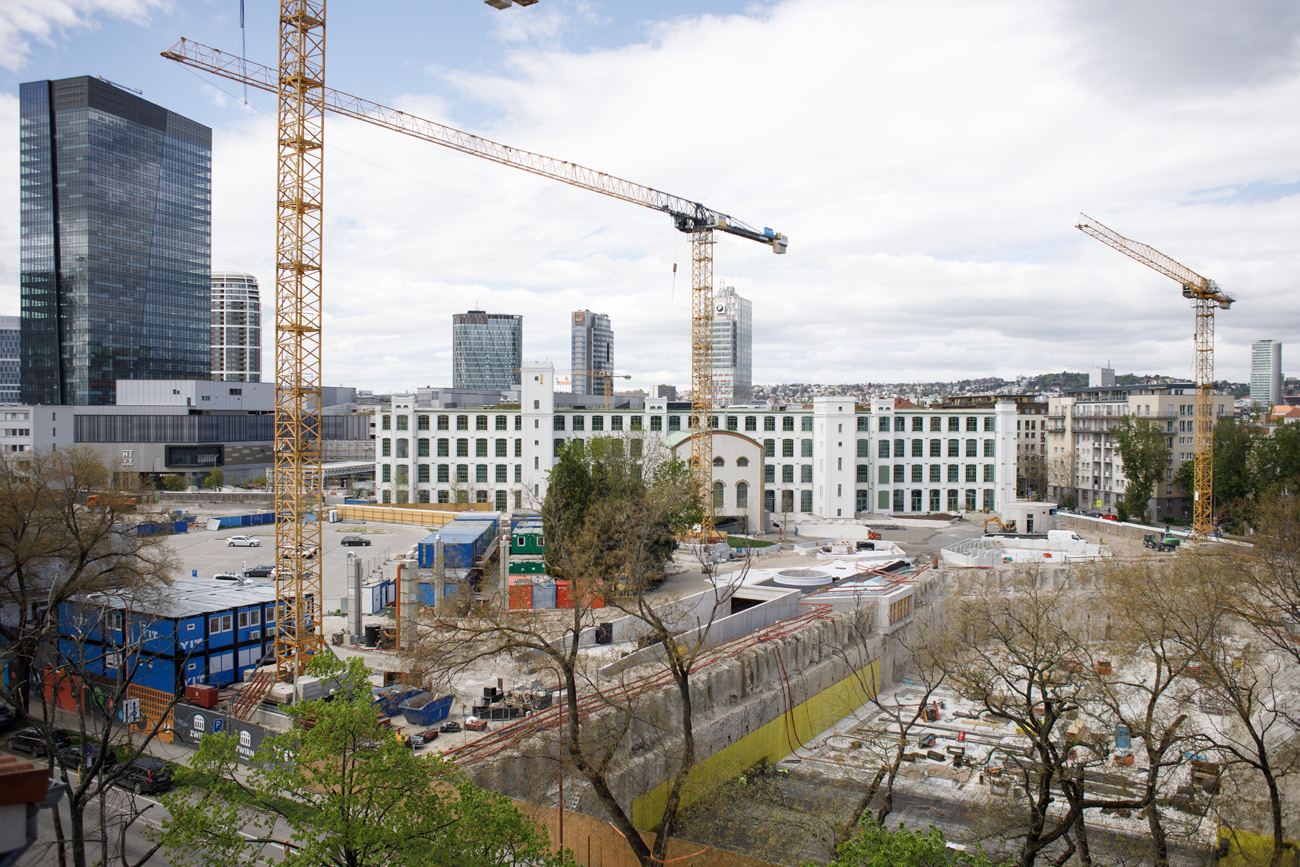
Nová Cvernovka. Photo Braňo Bibel
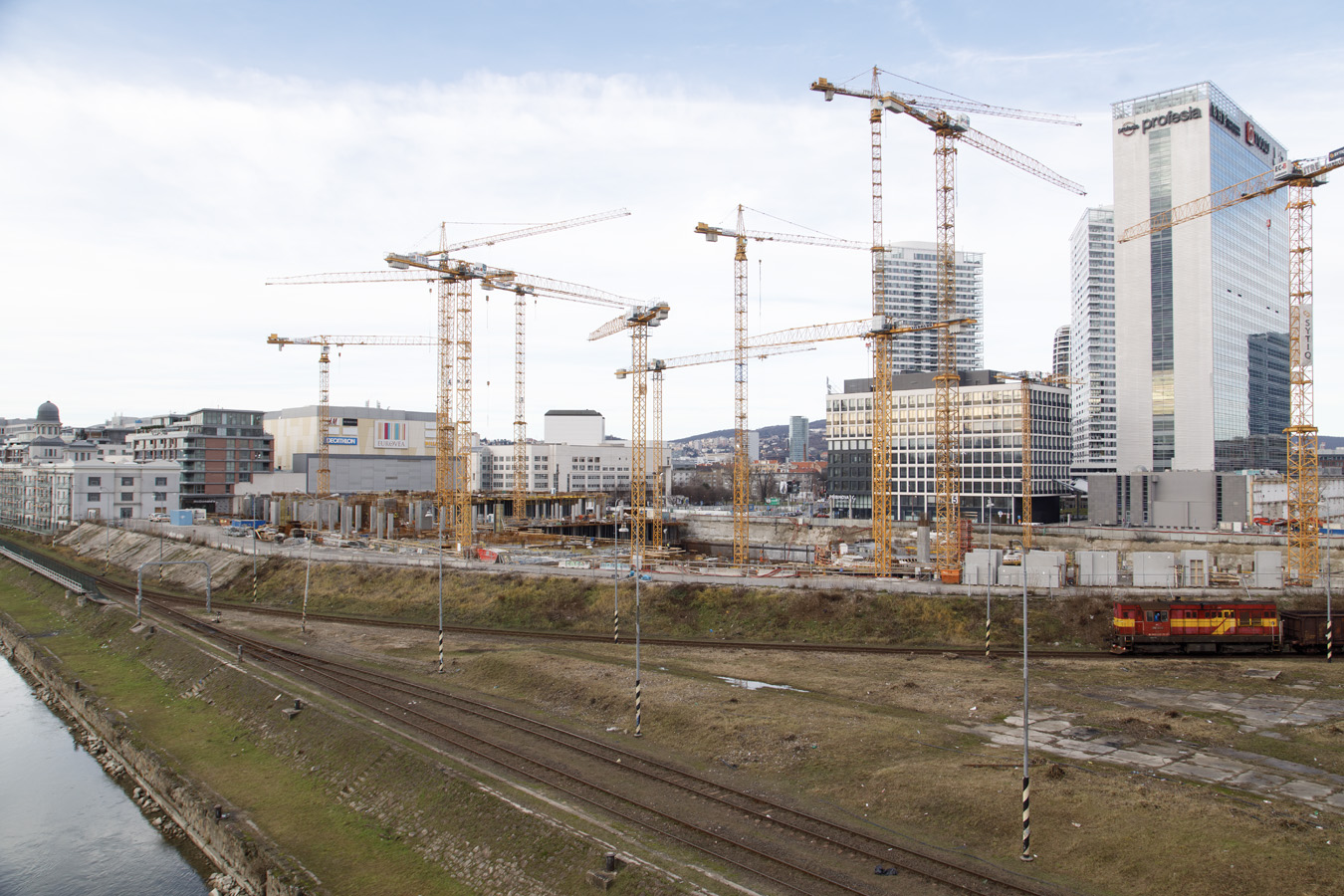 Eurovea 2, the constraction of first skyscaper in Bratislava.
Photo Braňo Bibel
Eurovea 2, the constraction of first skyscaper in Bratislava.
Photo Braňo Bibel
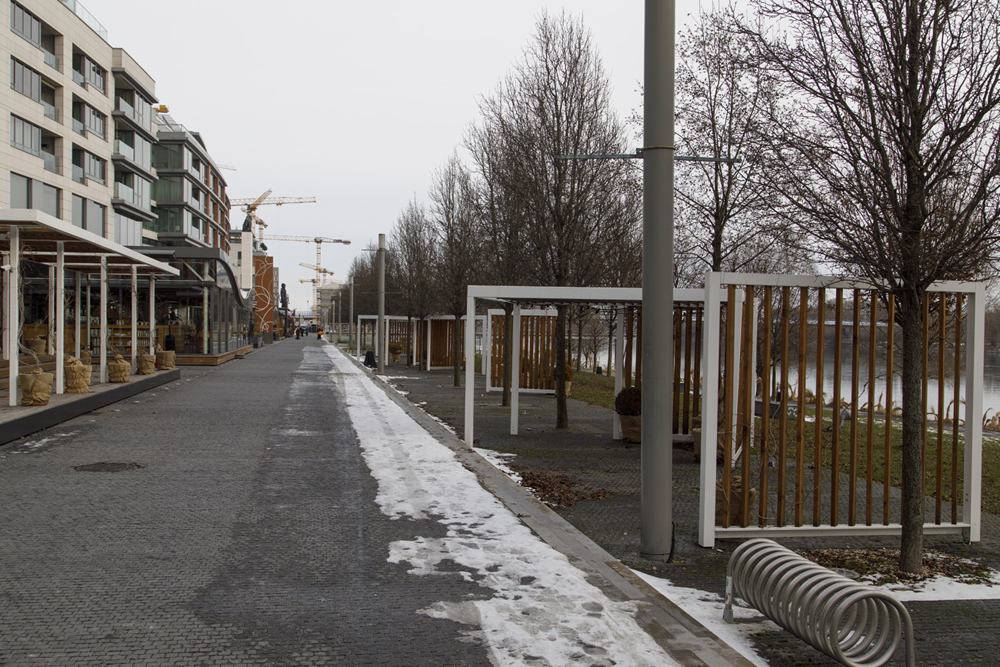
Eurovea 1, riverbank promenade. Photo Braňo Bibel
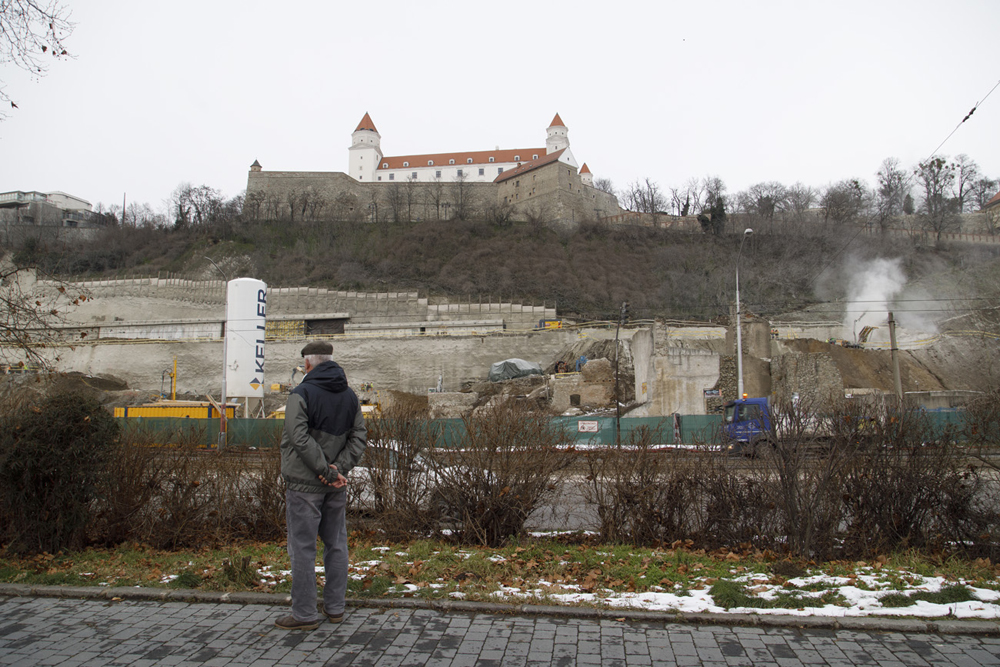 Nová Vydrica, construction under the Bratislava castle hill.
Photo Braňo Bibel
Nová Vydrica, construction under the Bratislava castle hill.
Photo Braňo Bibel
Nový Zuckermandel. Photo Braňo Bibel

Nový Zuckermandel. Photo Braňo Bibel

Riverpark. Photo Braňo Bibel
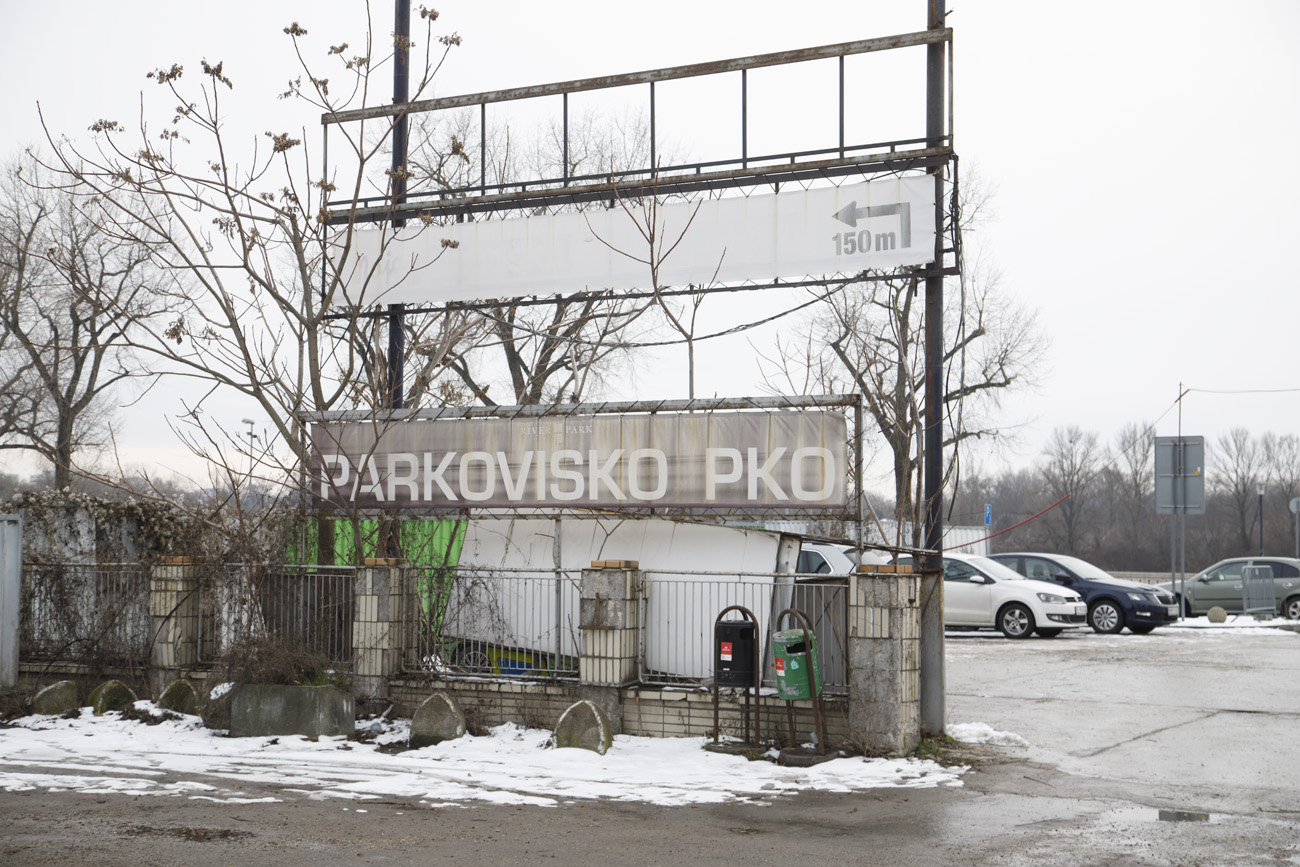 Only the parking lot left form the
PKO (park of Culture and Relaxation).
Photo Braňo Bibel
Only the parking lot left form the
PKO (park of Culture and Relaxation).
Photo Braňo Bibel